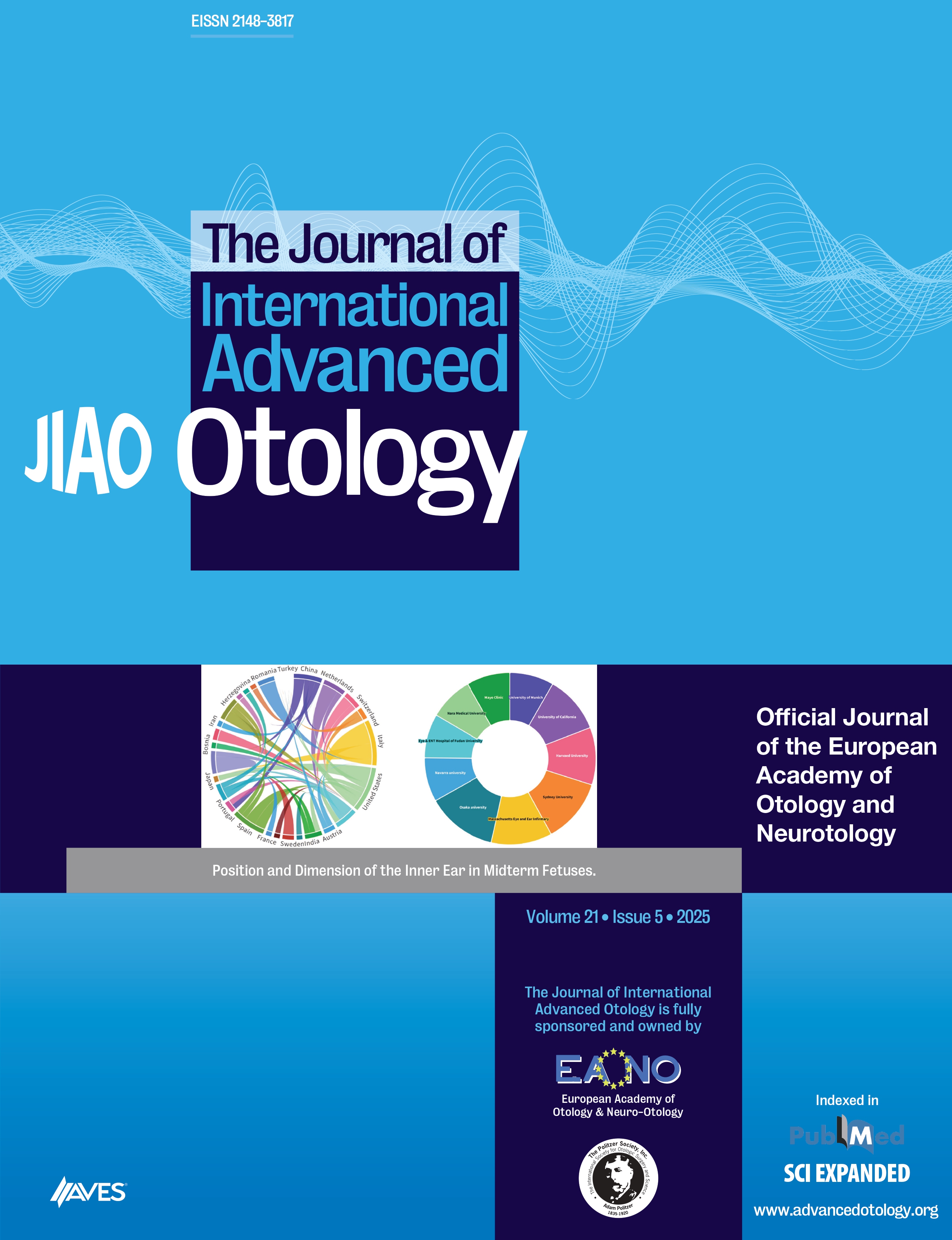The Vestibular Evoked Myogenic Potentials (VEMPs) test over the Trapezius Muscle: Neurophysiological Grounds in Muscle Extensor and Flexor Conditions
Main Article Content
Abstract
BACKGROUND: The vestibular evoked muscle potentials (VEMPs) test provides information about the otolith organs and the vestibular nerves. The usefulness of VEMP responses related to the trapezius muscle in the evaluation of the vestibular system remains uncertain. The present study sought to compare VEMPs recorded over the trapezius muscle (tVEMP) in extensor and flexor conditions with cervical VEMP (cVEMP) responses and to evaluate the applicability of tVEMP.
METHODS: A total of 22 healthy male subjects, aged between 19 and 38 years, were included in the study. After the hearing test, cVEMP and tVEMP were applied to all participants. Cervical vestibular evoked myogenic potential was applied over the sternocleidomastoid muscle (SCM), and tVEMP was applied over the trapezius muscle in both extensor and flexor conditions.
RESULTS: The absolute latency of the tVEMP flexor condition P1 was found to be significantly longer than that of the cVEMP P1 (P= .023). There was no significant difference in N1 latencies across all 3 test methods (P= .122). The amplitudes of tVEMP P1-N1 in the flexor condition were found to be significantly lower than those of both cVEMP and tVEMP in the extensor condition (P < .001).
CONCLUSION: A 500 Hz tone burst stimulus can elicit VEMP responses from the trapezius, and tVEMP can be used as an alternative to cVEMP. It seems that a significant benefit of the tVEMP extensor test is that it can be employed as an alternative in cases where cVEMP is not feasible.
Cite this article as: Satar B, Karababa E, Karaçaylı C. The vestibular evoked myogenic potentials (VEMPs) test over the trapezius muscle: neurophysiological grounds in muscle extensor and flexor conditions. J Int Adv Otol. 2025, 21(5), 1836, doi: 10.5152/iao.2025.241836.


